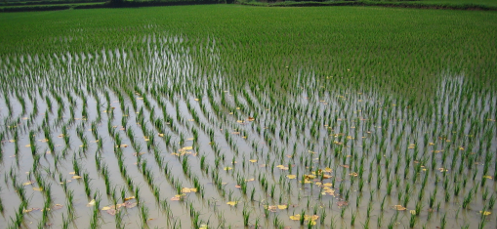
National Geographic has an article (HT Vipul) on Göbekli Tepe in Southern Turkey where people constructed a huge temple complex much before the invention of agriculture. This site is now prompting historians to rethink the theories on the origins of complex societies. How were foragers, who usually follow the resources like the Nanook, able to stay at one place and move 16 ton stones without wheels or animals? Why did they even bother constructing such a massive structure? Did pilgrimage pre-date the Neolithic revolution?
Discovering that hunter-gatherers had constructed Göbekli Tepe was like finding that someone had built a 747 in a basement with an X-Acto knife. “I, my colleagues, we all thought, What? How?” Schmidt said. Paradoxically, Göbekli Tepe appeared to be both a harbinger of the civilized world that was to come and the last, greatest emblem of a nomadic past that was already disappearing. The accomplishment was astonishing, but it was hard to understand how it had been done or what it meant. “In 10 or 15 years,” Schmidt predicts, “Göbekli Tepe will be more famous than Stonehenge. And for good reason.”[Göbekli Tepe]
There is a new explanation for the origin of agriculture
If these archaeologists were correct, these protovillages provided a new explanation of how complex society began. Childe thought that agriculture came first, that it was the innovation that allowed humans to seize the opportunity of a rich new environment to extend their dominion over the natural world. The Natufian sites in the Levant suggested instead that settlement came first and that farming arose later, as a product of crisis. Confronted with a drying, cooling environment and growing populations, humans in the remaining fecund areas thought, as Bar-Yosef puts it, “If we move, these other folks will exploit our resources. The best way for us to survive is to settle down and exploit our own area.” Agriculture followed.[Göbekli Tepe]
and it is connected to religion
Schmidt speculates that foragers living within a hundred-mile radius of Göbekli Tepe created the temple as a holy place to gather and meet, perhaps bringing gifts and tributes to its priests and craftspeople. Some kind of social organization would have been necessary not only to build it but also to deal with the crowds it attracted. One imagines chanting and drumming, the animals on the great pillars seeming to move in flickering torchlight. Surely there were feasts; Schmidt has uncovered stone basins that could have been used for beer. The temple was a spiritual locus, but it may also have been the Neolithic version of Disneyland.
Over time, Schmidt believes, the need to acquire sufficient food for those who worked and gathered for ceremonies at Göbekli Tepe may have led to the intensive cultivation of wild cereals and the creation of some of the first domestic strains. Indeed, scientists now believe that one center of agriculture arose in southern Turkey—well within trekking distance of Göbekli Tepe—at exactly the time the temple was at its height. Today the closest known wild ancestors of modern einkorn wheat are found on the slopes of Karaca Dağ, a mountain just 60 miles northeast of Göbekli Tepe. In other words, the turn to agriculture celebrated by V. Gordon Childe may have been the result of a need that runs deep in the human psyche, a hunger that still moves people today to travel the globe in search of awe-inspiring sights.[Göbekli Tepe]
See Also: Photos from Göbekli Tepe | Video of a clay model
